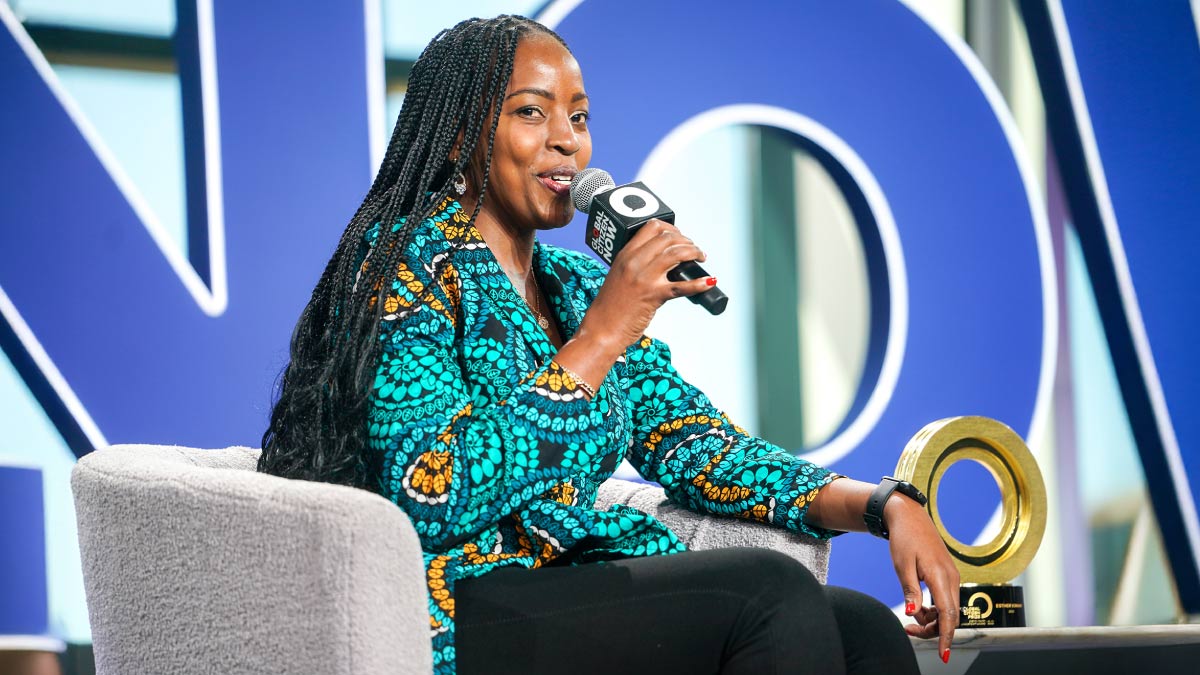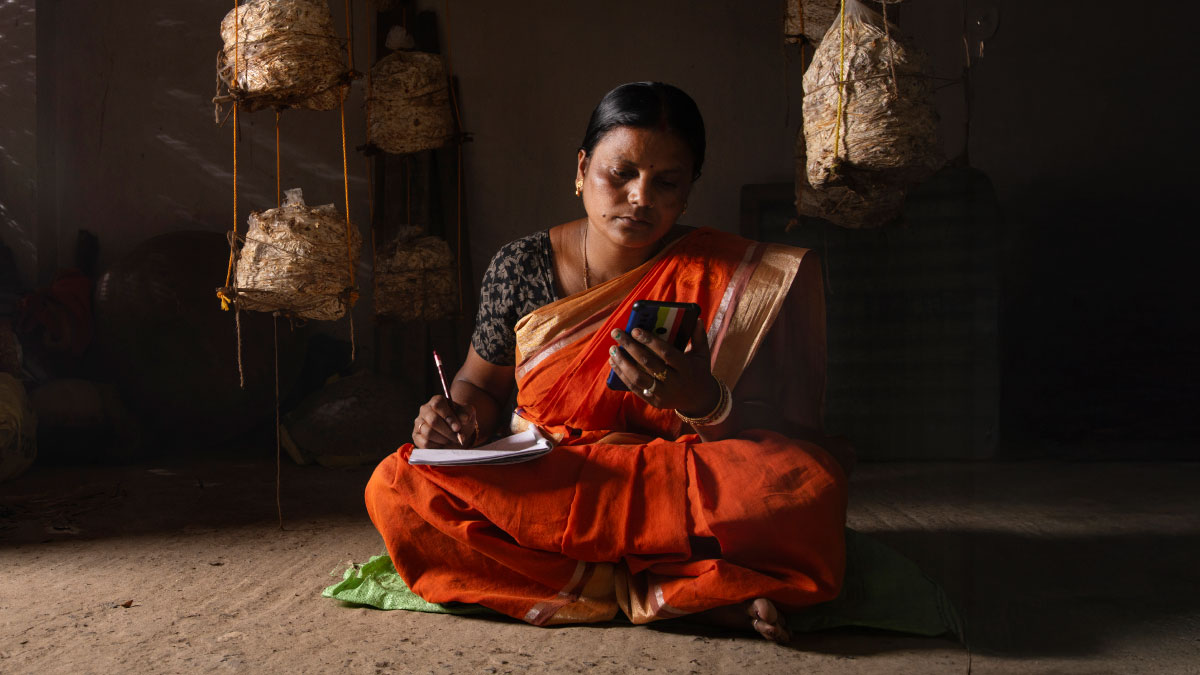Sustainability isn’t just critical for the planet and our future. It’s also a business imperative.
So, this year, Cisco created a new senior leadership role to drive even greater efforts in sustainable innovation and commitment. Because sustainability is an integral part of the company’s very purpose: powering an inclusive future for all. And increasingly, customers demand cutting-edge sustainable solutions, while employees, investors, and other stakeholders expect concrete results in areas like carbon emissions and product takeback, reuse, and recycling.
We spoke with Mary de Wysocki in the newly renovated Cisco office at New York’s Penn 1 — itself a showcase for sustainable smart-building technology — about her vision for her new role, the exciting opportunities ahead, and why sustainability and profits are not mutually exclusive.
Great to have you here today, Mary! You are Cisco’s first-ever chief sustainability officer. What compelled the company to create that role?
I think it starts with our purpose to Power an Inclusive Future for All. We just can’t have that future without a healthy planet. And it really is a combination of the demands from our customers, the interest of our employees, as well as the science — for example, the science that shows we must limit global temperature rise to 1.5 degrees centigrade to avoid the worst effects of climate change. So, we saw an opportunity to bring together all that Cisco has to offer, to drive significant impact.
How would you describe your role; what are the responsibilities?
I have the opportunity to create an integrated strategy across Cisco — towards decarbonizing our business and continuing to build a circular business model. But also incorporate sustainable solutions with constant innovation, while investing in new carbon-removal technologies, whether nature based or new technology innovations beyond the value chain. So, it’s really about bringing those together and building upon accurate, transparent data, which gives us a clear picture of our impact and progress.
Speaking of data, Cisco’s net-zero goal and near-term targets are some of the most ambitious in the industry.
We’ve been setting goals to reduce our scope 1 and 2 greenhouse gas emissions since 2008, and achieving these emission-reduction goals. But we felt that now was the time to set the most ambitious goal. So, that means near-absolute reduction, 90 percent across all scopes (1,2, and 3) by 2040, from our FY19 base year. We also set near-term targets, including a 90 percent reduction of our Scope 1 in 2 emissions by FY 25 from our FY19 base year. And we had our goals validated by SBTI, the Science Based Targets initiative; they looked at what we intend to do, and how we’re planning to achieve it. We’re one of the first technology hardware and equipment companies to have our net zero goal validated under the SBTi’s Net-Zero Standard.
Mary de Wysocki on Cisco’s transparency and rigour in reporting of sustainability goals
Cisco is all about innovation. Which innovations are having the biggest impact in sustainability?
We’re looking to create the most effective, secure, powerful products. At the same time, we’re always thinking about energy efficiency and designing to reduce waste and to more easily repurpose, recycle, and remanufacture. A great example is the 8201 router, which uses Cisco’s own Silicon One chip. Not only does it increase bandwidth by 35 percent above its predecessor, but it reduces the energy consumption by 96 percent. Another really good example is the UCS-X servers, which are designed with circularity in mind — they are modular, making them easier to repair, reuse and recycle.
Cisco’s goal is to incorporate circular-design principles in 100 percent of new products and packaging by FY25. How close are we?
We’re on track. We first had to identify what those design principles are and then provide the training and awareness to the engineers so that they can start thinking about what materials to use, how to incorporate recycled content, ways to standardize components and more. One example is identifying plastic components that are cosmetic and not needed. Another part of our strategy is to eliminate plastic bags in our packaging wherever possible, and we recently set a new goal that 50 percent of the plastic used in our products (by weight) will be made of recycled content by FY25. We also recently launched our Circular Design Evaluation Tool, which enables us to track progress toward our public goal.
Mary de Wysoki on how Cisco is striving for all to participate in the circular economy
We’re chatting in Cisco’s beautiful Penn 1 New York office. But it’s also teeming with smart-building innovation.
Penn 1 is a great experience of a smart building, with sensors looking at all kinds of environmental factors. It has the ability to use IoT devices to then determine things like the angle of the sun, when to automatically raise and lower the blinds, and reduce the overall energy usage. It’s also on a DC micro power grid, which uses significantly lower voltages and eliminates thousands of pounds of steel, copper wire, and other electrical equipment. It shows what a great opportunity hybrid work presents, to save energy and innovate further.
Leadership and partnerships are a big part of Cisco’s culture. What are some ways in which Cisco is leveraging that leadership and influence in the sustainability space?
Well, one example is the commitment that the Cisco Foundation made last year. It was a $100 million commitment to think beyond sustainability, into regeneration. It’s looking at new technologies and also nature-based solutions to sequestering carbon. We’re also incorporating impact investing, where you can find these interesting climate impact funds and for-profit companies that are really looking for critical growth capital to help scale their innovation further. The Foundation wants to invest in these new technologies, because quite frankly, there isn’t enough capital flowing to climate solutions, despite the critical role that these solutions play in climate change mitigation.
How does Cisco let its customers and other stakeholders know about its environmental initiatives?
Each year we publish our Purpose Report, and in it we talk about what we did in the previous year around diversity and inclusion, human rights, the wellbeing of employees, how we're supporting communities, as well as what we’re doing in greenhouse gas emissions, circularity, and environmental sustainability. Two years ago, we also introduced the ESG Reporting Hub (ESG stands for Environmental, Social and Governance). The ESG Reporting Hub provides more detail beyond the Purpose Report, because there is so much information and a rich history of progress that we want to share — with investors, customers, and other stakeholders who want to partner with us, and, increasingly, with new talent. People are looking at our Purpose Report before they even choose to interview with Cisco. So, those are just two ways of being very transparent on not only our public commitments, but our journey toward them.
What do you say to people who still believe that sustainability and profitability are conflicting priorities?
I would say that as we embed purpose into the business, we’re seeing long-term differentiated value creation. Our engineers are thinking about how they design in circular design principles, improve energy efficiencies and reduce waste. And that’s also what our customers, employees, and prospective talent want. They see how our products are delivering sustainable impact to the business. It is a big growth opportunity, in my opinion. It’s good for the business, good for the world.
There’s no shortage of big problems in the world, but what excites you about the future and what Cisco can accomplish?
I think what I’m most excited about is the passion and the inspiration I see among so many Cisco employees. And one of the fascinating areas going forward will be how we think about incorporating sustainable decisions deeper into our business. I do think that as we show up into the community, we can have a positive impact as we think about the right technologies, policies, and practices. It’s this combination of not only thinking about purpose, from a sustainability lens, but also providing experiences, solutions, practices that enable inclusivity. So, I look forward to us really bringing it all together.
###




